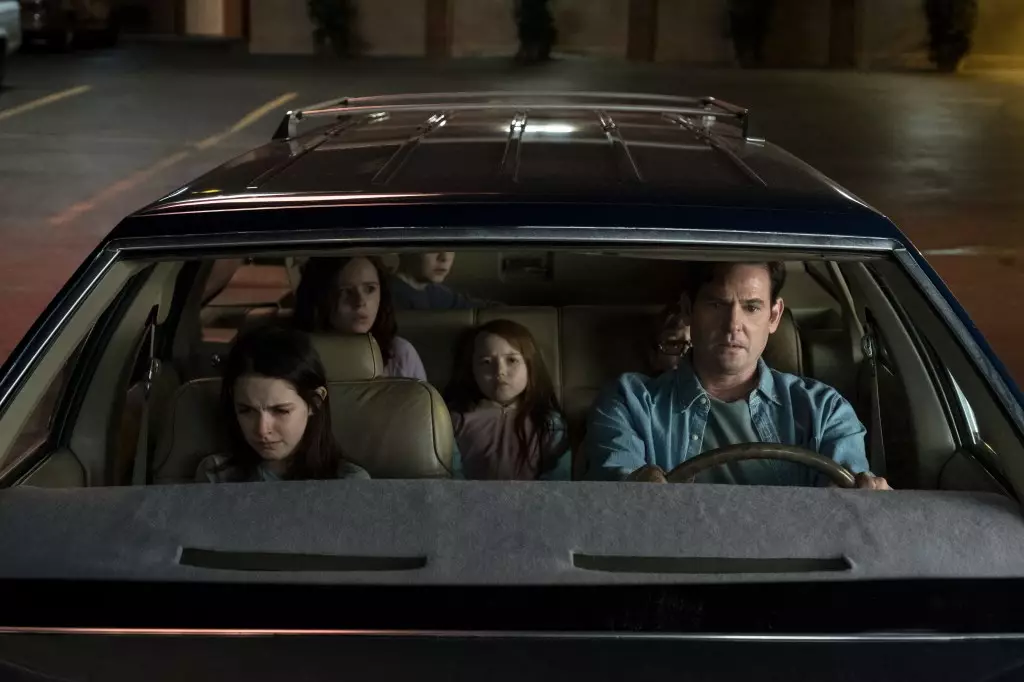Mike Flanagan is not merely a director of horror; he is a profound storyteller whose narratives emerge from the darkest corners of human experience. His revelations about the therapeutic nature of his work—particularly in projects like *The Haunting of Hill House*—provide an intimate glimpse into how sorrow shapes his artistic expression. Following a tragedy within his own family involving suicide, Flanagan turned grief into a creative outlet. The fact that such pain can be distilled into art, especially in a genre often dismissed as simplistic, begs for deeper examination. Flanagan’s approach to horror speaks to the universal struggle against loss and the need for a platform to express our innermost fears and sorrows.
His honest acknowledgment of using art as a coping mechanism resonates with many who have faced similar tragedies. The way he weaved personal nightmare imagery into the narrative fabric of *Hill House* transforms the series into more than mere entertainment; it becomes a vehicle for healing. Flanagan points out that the audience’s connection to these themes can be deeply therapeutic, implying that confronting fear through horror can lead to understanding and acceptance.
Horror: A Misunderstood Genre
Flanagan’s grievances about the persistent bias against horror within both the audience and industry shed light on a long-standing cultural misapprehension. Despite horror being a rich tapestry of storytelling—capable of eliciting deep emotional responses and challenging social norms—it often gets relegated to the status of mere shock value. Flanagan argues that the genre’s periodic resurgence into the spotlight, often catalyzed by awards recognition, is emblematic of an industry that fails to see horror as an art form as worthy as drama or romance.
He cites successful works, like those of Jordan Peele, to demonstrate how a single award-winning project can validate an entire genre, even if temporarily. Flanagan advocates for a shift in perception, pushing audiences to recognize that horror encompasses layered narratives as rich and complex as any other genre. His comments highlight a paradox that continues to linger—an oscillation between recognition and dismissal that leaves horror creators, including Flanagan himself, grappling for credibility while crafting deeply human stories laced with terror.
The Humanism in Horror
Perhaps the most striking aspect of Flanagan’s take on horror is his relationship with Stephen King, widely regarded as the titan of modern horror literature. Flanagan radically claims that King is “not a horror writer” in the typical sense; he is, rather, a “gooey-hearted, lovely humanist.” This redefinition calls into question the very fabric of horror—suggesting that true horror is not solely based on scares but rather on the profound exploration of human nature and its fragilities. In films and narratives that adapt King’s work, Flanagan finds an emotional depth that transcends genre constraints, ultimately illuminating the shared experiences of pain, love, and the bonds of friendship.
In a world where horror often gets packaged as a mere thrill ride, Flanagan advocates for narratives that delve deeper. He argues that the horror elements emerge organically through character development, emphasizing empathy and emotional truth. This perspective allows horror to serve not only as a genre of fear but also as a lens through which we can examine our humanity. This is a refreshing take, especially in an era where spectacle tends to overshadow substance.
The Monologue: An Art Form at Risk
One of Flanagan’s most impassioned points during his discussions involves the diminishing art of monologue in modern cinema, an assertion that strikes an emotional chord. Flanagan contends that the power of well-crafted dialogue, particularly in a genre where articulation of experience is vital, is at risk from the demands of streaming services and industry profits. The monologue, a time-honored tradition of character exploration and emotional resonance, is being sacrificed at the altar of marketability.
His plea to preserve this art form is not merely about maintaining tradition; it’s about championing the emotional impact that words can have in film. As characters articulate their struggles and fears, they create a mirror for audiences to reflect upon their own lives. Flanagan urges filmmakers to resist conforming to the market pressures that seek to shorten and dilute these powerful moments, reminding us that true artistry often lies in the unfiltered expression of human experience.
In a cinematic landscape where horror faces a precarious position, Mike Flanagan emerges not just as a creator but as a vital advocate for depth, emotion, and humanity in storytelling. His work continues to challenge the conventions of the horror genre while exploring the very essence of what it means to be human, ultimately leaving a legacy not defined by fear, but by understanding and healing.

Leave a Reply